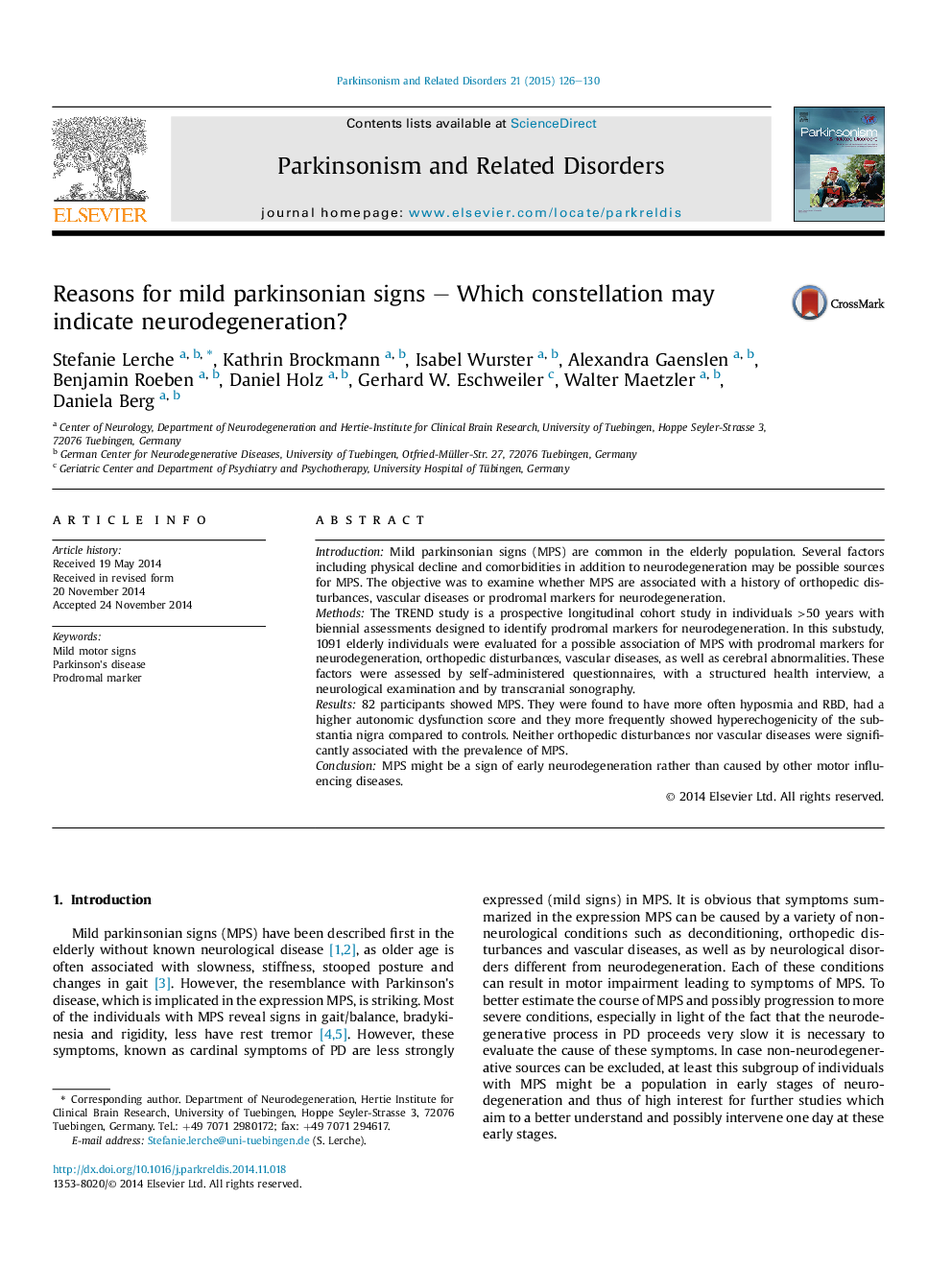| Article ID | Journal | Published Year | Pages | File Type |
|---|---|---|---|---|
| 1920536 | Parkinsonism & Related Disorders | 2015 | 5 Pages |
•Individuals with MPS have more often prodromal markers for PD compared to controls.•Individuals with MPS often show hyperechogenicity of the substantia nigra.•There is no association between orthopedic disorders or vascular diseases and MPS.•MPS might be a sign of early neurodegeneration rather than caused by diseases.
IntroductionMild parkinsonian signs (MPS) are common in the elderly population. Several factors including physical decline and comorbidities in addition to neurodegeneration may be possible sources for MPS. The objective was to examine whether MPS are associated with a history of orthopedic disturbances, vascular diseases or prodromal markers for neurodegeneration.MethodsThe TREND study is a prospective longitudinal cohort study in individuals >50 years with biennial assessments designed to identify prodromal markers for neurodegeneration. In this substudy, 1091 elderly individuals were evaluated for a possible association of MPS with prodromal markers for neurodegeneration, orthopedic disturbances, vascular diseases, as well as cerebral abnormalities. These factors were assessed by self-administered questionnaires, with a structured health interview, a neurological examination and by transcranial sonography.Results82 participants showed MPS. They were found to have more often hyposmia and RBD, had a higher autonomic dysfunction score and they more frequently showed hyperechogenicity of the substantia nigra compared to controls. Neither orthopedic disturbances nor vascular diseases were significantly associated with the prevalence of MPS.ConclusionMPS might be a sign of early neurodegeneration rather than caused by other motor influencing diseases.
